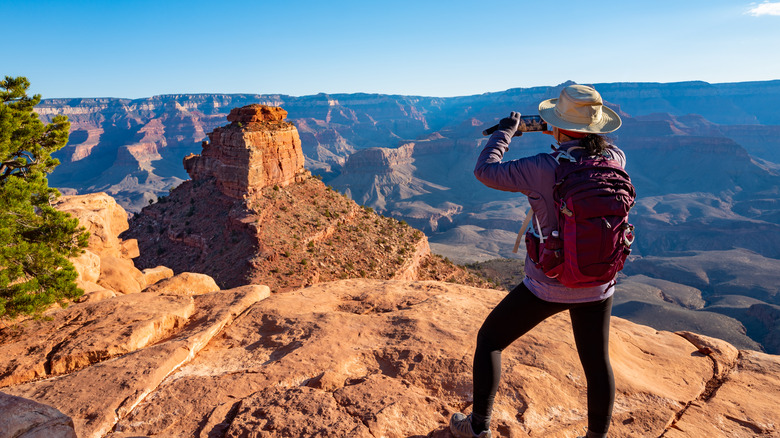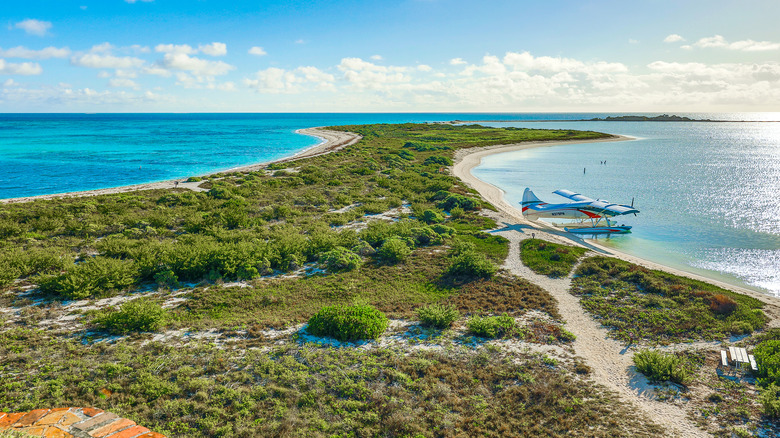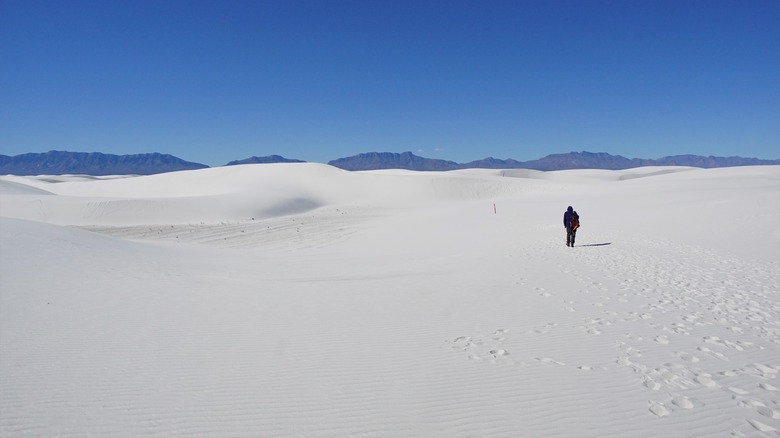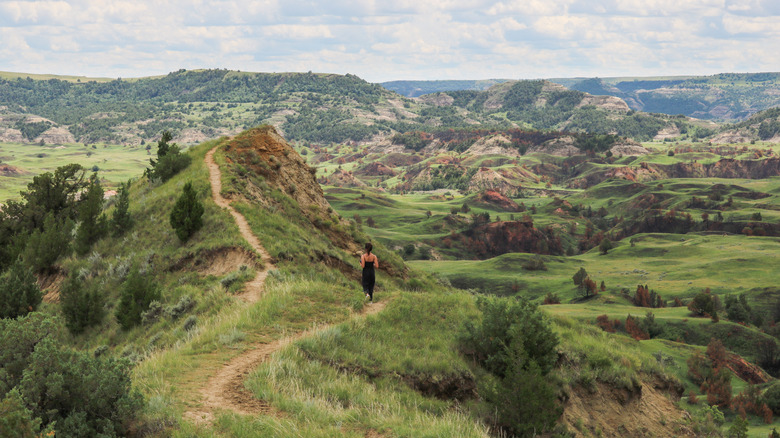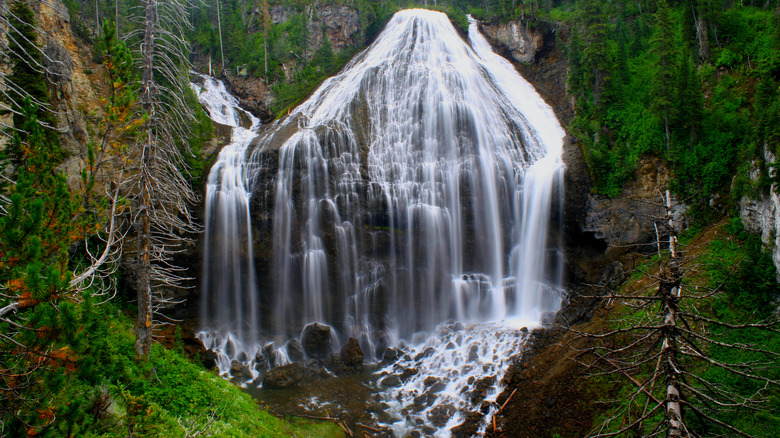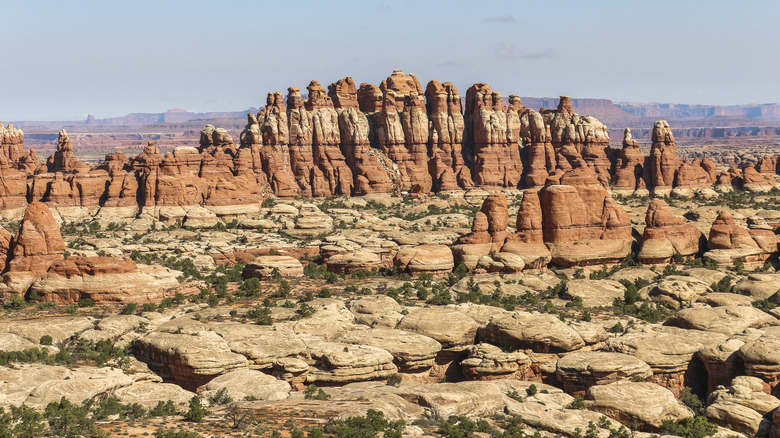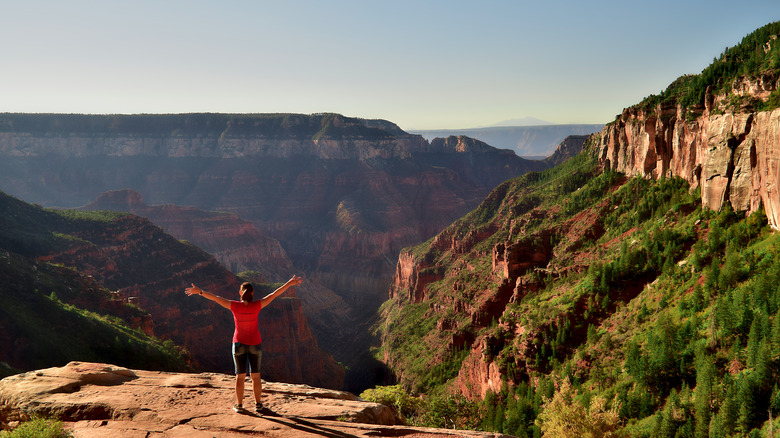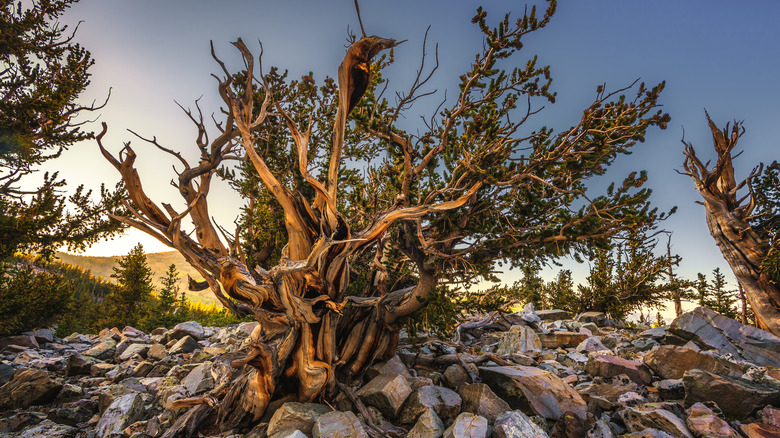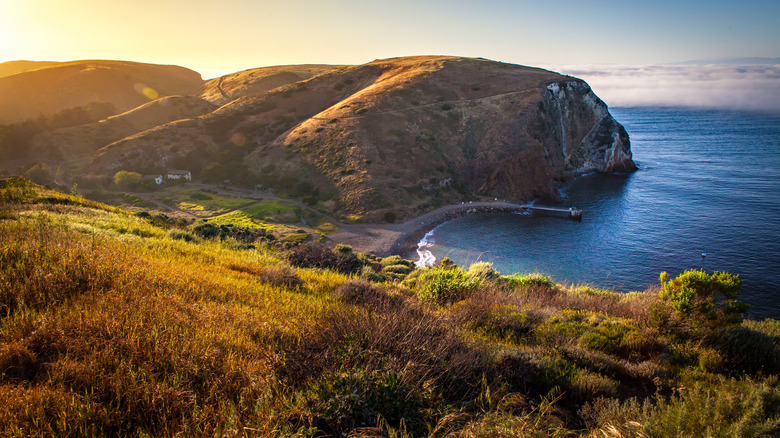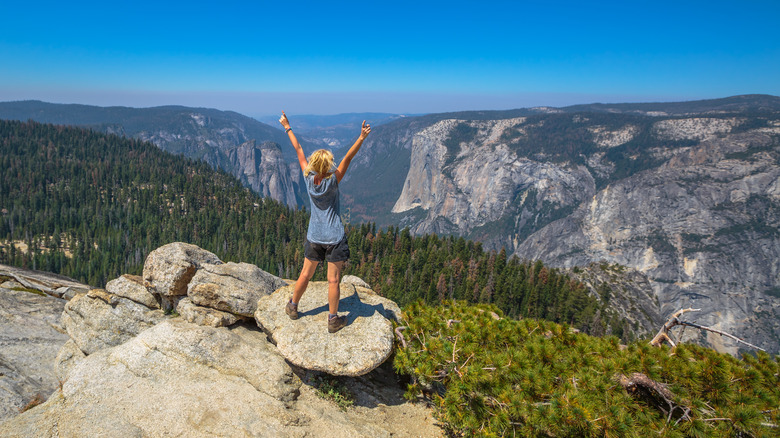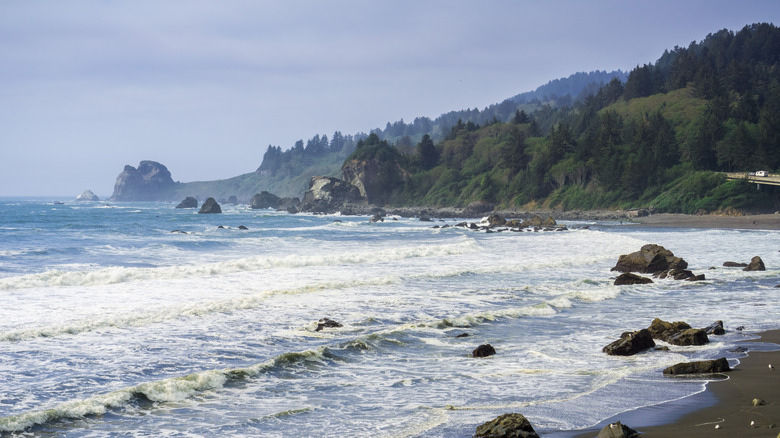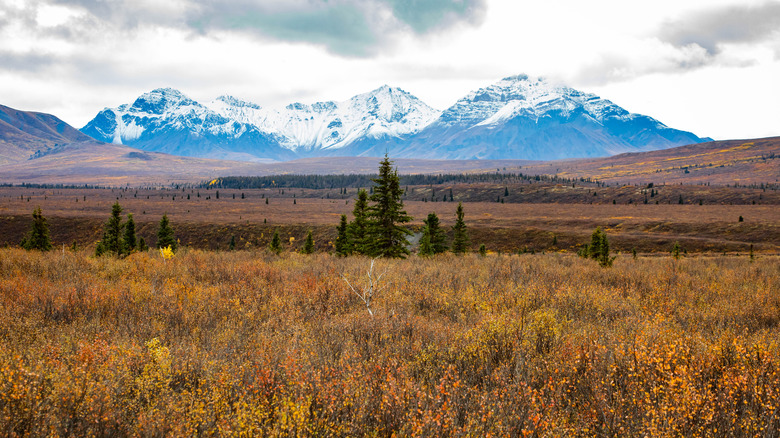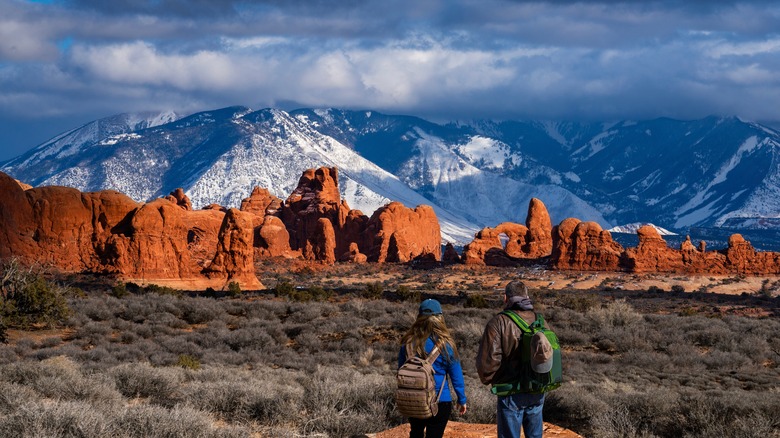The Most Beautiful Underrated Hikes In US National Parks, According To Reviews
America the Beautiful is blessed with over 21,000 miles of trails that take hikers through its most breathtaking scenery. But as many hikers know, the word is out about many of the best spots and experiences that should be solemn and spiritual. They are now marred by bumper-to-bumper foot traffic, tour buses, selfie sticks, and full parking lots. Ahead of the park's peak tourist season, we went on a deep dive through those 21,000 miles to find trails that are off the beaten track but just as beautiful, if not more so.
Starting on a remote tropical island off the coast of Florida, we make our way through the dramatic cliffs and canyons of the West and even find some hidden gems in hotspots like Yosemite and the Grand Canyon. We then venture through the islands and redwoods of California's stunning Pacific coast before ending up in a barren, windswept tundra leading up to the continent's tallest mountain. To curate select, underrated trails in national parks, we prioritized reviews from hikers who had taken these paths and, therefore, had first-hand experiences.
Bush Key, Dry Tortugas National Park
At our first park, it may be just you and the turtles. Dry Tortugas National Park, a chain of seven islands named after its many loggerhead turtles, is about 70 miles west of the beautiful sunsets of Key West in the middle of the Gulf of Mexico. Ninety-nine percent of the park lies underneath turquoise waters, and it is only accessible by an expensive seaplane or a ferry that's booked up to a year in advance. That makes Dry Tortugas one of the country's least visited national parks: around 80,000 people visited in 2022.
However, this same factor creates a scenic tropical paradise for adventurous hikers and the innumerable species of turtles, birds, sharks, crabs, and more that call the area home. Many people come to the park to snorkel or kayak among them, but they can also walk the Bush Key Trail. It's a 1-mile loop around the shoreline of Bush Key that provides stunning views of white sand beaches, bright turquoise waters, and a dizzying variety of birds and turtles nestled in the bushes. Because the trail is home to so many species, it is closed from February to September, during a critical nesting season. If the trail is closed, don't despair: You can still camp at night and snorkel among gorgeous coral reefs. You can even swim along the moat walls of Fort Jefferson, an abandoned hexagonal prison that is now the largest brick structure in the Western Hemisphere.
Alkali Flat Trail, White Sands National Park
If you appreciate the white sands at Dry Tortugas, you'll be in heaven at White Sands National Park in southern New Mexico. As its name suggests, the park is nearly 115 square miles of sand so white it's often mistaken for snow. But you're actually in the middle of the desert, and the sand is billions of bright white gypsum crystals.
One of the best routes through this ocean of blindingly white sand (seriously, bring heavy-duty sunglasses) is the 5-mile Alkali Flat Trail, a strenuous hike through dunes as tall as 60 feet. The trail eventually leads to the Alkali Flat, the dry lakebed of Lake Otero, an evaporated water body that was once one of the largest in the southwest and teemed with prehistoric life. Now, it is the source of much of the park's gypsum and home to the planet's largest collection of Ice Age-fossilized footprints.
The Alkali Flat Trail is spellbinding, but it's not for the faint of heart. Go on a cooler day, and bring at least two 32-ounce bottles of water along — there's no water or shade along the trail. For more leisurely ways to enjoy the incredible white sands, try driving the 16-mile Dunes Drive or setting up shop at one of the three picnic areas near the visitor center. If you'd really like to enjoy the "snow," grab a sled and go sailing down the dunes, one of the park's most popular activities.
Boicourt Trail, Theodore Roosevelt National Park
It's ironic that one of America's most underrated national parks played a vital role in establishing the National Park Service. In 1883, New York aristocrat Theodore Roosevelt came out to the Badlands to hunt bison and improve his health. He was so inspired by the spectacular scenery that he wrote several pieces and books on his life there. His conservation policies created the foundation of the National Park Service shortly after his presidency.
Today, the land that so inspired Roosevelt is now the only national park named after a single person: A more than 70,000-acre expanse of stunning buttes, cliffs, canyons, and rivers dotted with bison, wild horses, elk, and so much more. For panoramic views of this majestic park, head to the Boicourt Trail, a 0.2-mile overlook trail that is flat, paved, easy, and leads to some of the best views in the park. Past the overlook, an unpaved trail leads to another overlook with more incredible views. The trail also connects to the South Unit Scenic Drive, a 24-mile out-and-back drive offering incredible vistas and close-up views of the bison and elk that roam freely around the park.
The park is divided into three sections: The North and South Unit, which offer scenic drives and hikes and ranger-led programs, and the undeveloped Elkhorn Ranch Unit. The latter is the site of Teddy Roosevelt's old ranch. The mighty Little Missouri River flows throughout the three units.
Union Falls Trail, Yellowstone National Park
While Yellowstone National Park is on everyone's camping bucket list, it is America's fourth most visited national park. Don't let its ranking fool you; it's also 2.2 million acres of rugged wilderness. One of the most epic swaths of the park is the 16-mile Union Falls Trail, which takes intrepid hikers through the remote Bechler Region in the southwestern corner of the park to Yellowstone's second-largest waterfall. The Bechler Region gets the most rainfall out of anywhere in Yellowstone, and it is full of rivers, creeks, streams, and waterfalls.
One of those waterfalls is the 250-foot Union Falls, a majestic A-shaped cascade that, from afar, resembles a bridal veil or a beautiful white ghost. That gorgeous ghost is the glorious reward for taxing six-plus hours of backcountry hiking, one of the reasons this section of the park is so remote. But Union Falls is far from the only reward along this spectacular trail. Hikers will enjoy miles of pristine forest, flowing creeks, and beautiful vistas.
If you want to get your waterfall fix early and soothe your aching feet, take a brief detour to Scout Pool, a hot spring where hikers can swim in toasty, warm geothermal water under hot springs. Hikers will get wet whether they want to or not since they'll need to ford the Falls River, which flows quickly and can be up to 40 feet deep. Don't say we didn't warn you.
Chesler Park Loop, Canyonlands National Park
This trail will have you on pins and needles. The Chesler Park Loop, especially when connected to the Joint Trail, takes hikers through the spectacular "Needles" section of Utah's Canyonlands National Park. This is a brilliant succession of dozens of flaming red and orange sandstone hoodoo mountains. The Chesler Park Loop is a 10.7-mile trek in, around, and through these 200 million-year-old hoodoo needles, offering sweeping views of the entire Canyonlands. Many hikers like to combine the Chesler Park Loop with the Joint Trail, a 4-mile out-and-back trail that allows hikers to squeeze in between giant boulders, which allows for both shade and tantalizing slits of light at the end of the tunnel.
Both trails are strenuous, ascending upwards of 1,200 feet, with a bit of rock scrambling thrown in. But as with many trails on this list, the reward of challenging paths is fewer crowds. And while testing, hikers say that the Needles Section of Canyonlands provides a nice middle ground. It is more moderate than the remote Maze, a backcountry jumble of cliffs and canyons without clear trails, but more difficult than the popular Island in the Sky Section, which contains the iconic Mesa Arch. That said, if you're in Canyonlands, brave the crowds for the 0.6-mile Mesa Arch Trail to see the 27-foot-long arch, which gracefully frames stunning canyon and mountain views and gleams a fiery red when the sun hits at the right angle.
North Kaibab Trail, Grand Canyon National Park
It felt wrong not to include the Grand Canyon on any list of national parks, even though this park is full of busy crowds during a particular time of the year. The 1.2 million-acre park contains plenty of hidden gems. For a quieter Canyon experience, head to the North Rim, which has just a fraction of the South Rim's visitors but just as much jaw-dropping beauty. One of the North Rim's best hikes is the epic 28.2-mile North Kaibab Trail, which takes hikers along the side of the canyon down to the bottom and then back up again. It is one of the Grand Canyon's least visited and most difficult trails, but for experienced hikers, it's worth it.
The North Kaibab Trail begins at the North Kaibab Trailhead, where hikers can take in the views that make the Grand Canyon one of the Seven Natural Wonders of the World. It descends nearly 5,700 feet through a narrow, winding trail blasted out of sandstone cliffs, through forest and firs, and the flowing Bright Angel Creek. Along the way, hikers will enjoy the scenic Ribbon Falls cascading down red rocks, walking through said rocks via the evocative Supai Tunnel and companionship of many a mule. The trail ends at Phantom Ranch along the Colorado River, one of a few rest stops. The grueling hike back up should not be attempted on the same day, so hikers should bring camping equipment and apply for a permit.
Alpine Lakes, Bristlecone, and Glacier Loop, Great Basin National Park
Great Basin National Park is another of America's least visited national parks, located in a desolate stretch of eastern Nevada near a highway known as the "Loneliest Road in America." That means intrepid hikers can enjoy its many treasures nearly all to themselves, without hiking difficult backcountry trails for a respite from the crowds. The trailhead to Great Basin's three best trails is located at the Lehman Caves Visitor Center, an exquisitely ornate cave system that is the longest in Nevada.
The hike begins at the Alpine Lakes Loop, which traverses two beautiful lakes and provides stunning mountain views. The Alpine Lakes Loop branches into the Bristlecone Loop Trail, which accesses one of Great Basin's most unique and best-known attractions: The grove of Bristlecone Pines, whose gnarled bark resembles a cross between cave stalactites and antelope horns. What truly sets these otherworldly trees apart is their age. At more than 5,000 years old, they are the oldest non-clonal species on the planet, twisted from millennia of surviving this harsh terrain. The Bristlecone Trail then branches into the Bristlecone Pine Glacier Trail, a 3.7-mile out-and-back trail that takes hikers past Nevada's only glacier.
Aside from its caves and bristlecones, Great Basin is also celebrated as an International Dark Sky Park. It's home to some of the darkest skies in the continental United States. It hosts an Astronomy Festival each September and ranger-led programs at its Astronomy Amphitheater throughout the summer.
Cavern Point Loop, Channel Islands National Park
After the ravages of Canyonlands and North Kaibab, a comparatively leisurely stroll along towering sea cliffs might be just what the doctor ordered. Pods of dolphins (Glimpse dolphins on this beach vacation) and cute little foxes might be even more of a tonic. The Channel Islands are an archipelago of eight islands dotted off the coast of southern California, from roughly San Diego to Santa Barbara. Despite being roughly 25 miles off the coast of one of the nation's most populated areas, Channel Islands National Park is one of its least visited, receiving just over 300,000 guests in 2021. This is because the ferries run seasonally and sporadically, and overnight camping is often required.
The results are gorgeous, windswept, splendidly isolated islands that give a glimpse of what California used to look like. One of the more popular islands is Santa Cruz Island, a 62,000-acre island (about three times the size of Manhattan) full of majestic cliffs, bluffs, and plants and animals seen nowhere else. The Cavern Point Loop is a lovely 2-mile trail around some of the island's most scenic spots. Hikers will marvel at the undulating expanse of green and blue before them and, on a clear day, the entirety of the Southern California coast. The trail is named for Cavern Point, a breathtaking overlook towering 316 feet above the water. Hikers hungry for more views like this can continue along the adjoining Potato Harbor and North Bluff trails.
Sentinel Dome Trail, Yosemite National Park
The Sentinel Dome Trail is one of the best-value trails around: after just over 2 miles of relatively surprisingly beginner-hiker-friendly terrain and crowds, trekkers will be rewarded with some of the best views on the entire continent. It is one of the quickest and easiest ways to marvel at all the wonders of Yosemite if you're craving some alone time without the crowds of more popular sites like Glacier Point.
The trail begins at Glacier Point Road, which is already 7,700 feet in the air. It wanders through a crisp, pristine pine forest that slopes gently upward. Eventually, hikers will come across the Sentinel Dome, a roughly 400-foot granite dome on the south wall of Yosemite Valley. The gentle hike quickly turns into a steep scramble, but that exertion is richly rewarded with panoramic, 360-degree views of some of America's most storied scenery. At 8,100 feet, the dome offers breathtaking views of Yosemite Valley, the iconic cliffs of El Capitan, the 2,425-foot Yosemite Falls, Nevada Fall, the dolphin snout-shaped Half Dome summit, and the nearly 10,000-foot Clouds Rest summit.
In addition to the incomparable views, hikers can also enjoy the remnants of the Jeffrey Pine. It's a lone, roughly 500-year-old tree on the dome that became an international celebrity when Ansel Adams photographed its fascinating sideways tilt in 1940. The tree died of drought in 1977 and fell over in 2003, but its gnarled skeleton still watches over the valleys and mountains below.
Hidden Beach and California Coastal Trail, Redwood National Park
For an intoxicating mix of some of the best forest and ocean this country has to offer, we're heading northwest to the Hidden Beach and California Coastal Trails, which are every bit as bewitching as they sound. We're starting at the Trees of Mystery in Klamath, in the heart of Redwood National and State Parks. There are many trails underneath redwoods, but the Trees of Mystery's Redwood Canopy Trail takes hikers right through them via tree decks connected by a labyrinth of bridges and staircases. Hikers walk 50 to 100 feet above ground and gaze down at the forest beneath them. If that wasn't enough of a cool view, the park also offers cable cars that soar above the forest.
Cross the 101 to the Hidden Beach trailhead, and you're in for a more traditional hiking experience. The trail meanders through a lush forest full of spruce trees, blackberry bushes, and bright yellow banana slugs. The Hidden Beach Trail eventually merges with the California Coastal Trail, part of a larger network of trails spanning the coast from Oregon to Mexico. Along the coastal trail, hikers will hear the soothing sounds of rustling leaves and Pacific waves crashing below them — all mingled with the occasional barking of sea lions. The trail eventually descends into Wilson Creek Beach, or False Klamath Cove, a gorgeous stretch of coast dotted by towering sea stacks and kissed by an evergreen coast and layers of white mist.
Savage Alpine Trail, Denali National Park
From northern California, we head dramatically further northwest into Denali National Park, a more than 6 million-acre park that is larger than New Hampshire. The park's many tundras, forests, rivers, lakes, and glaciers are all centered around its namesake: Denali, also known as "The Great One" — the snow-capped 20,310-foot mountain that is the tallest in North America.
Even though the park is named after Denali, it's so massive that only about 30% of its visitors even see the mountain. One of the best trails for viewing the Great One is the Savage Alpine Trail, which spans about 4 miles from the Savage River to the Savage River Campground. The well-maintained trail traverses the heart of a vast, open tundra. With hardly any trees, hikers rave that they are blessed with unobstructed views of miles and miles of pristine wilderness. The best view of all is the towering, snow-capped peaks of Denali, which are surrounded on all sides by even more snow-capped mountains. Hikers should be aware that on a cloudy day, Denali may not be visible.
Keeping hikers company along this beautiful trail are the adorable arctic squirrels and marmots, and the occasional moose, wolf, or brown bear. The trail is sometimes closed due to bear activity, so be sure to check beforehand. At the end of the trail, a free shuttle bus brings hikers back to the trailhead. If you still want more of Denali, consider booking a plane above it.
Methodology
Choosing from the roughly 1,300 trails that make up 63 national parks was a difficult task, to say the least. Finding a hidden gem needle in that haystack was even more challenging. We scoured numerous blogs and trail reviews in an effort to compile a list that included both stunning, underrated trails in popular parks and equally breathtaking but unsung trails in least-visited parks. We also aimed for a variety of scenery and experiences, ranging from the tropics to the tundra to everything in between.
